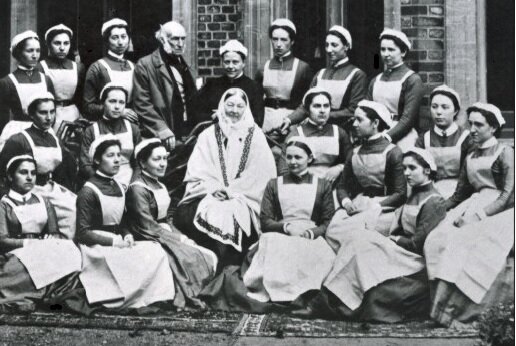The Unnerving Impact of COVID-19 on the Chronically Ill
/By Pat Akerberg, Guest Columnist
Let’s face it. Living with a debilitating chronic health condition and a global pandemic at the same time are a “double whammy” with unthinkable impacts. Trigeminal Neuralgia (TN) happens to be my medical vulnerability. Yours may be a different one putting you at risk.
Known as the “suicide disease,” TN is an excruciating facial pain disorder that is considered the worst pain known to medicine. With a tenuous prognosis, TN significantly compromises life quality and puts its sufferers at risk both medically and psychologically.
Covid-19 needs no introduction as it continues to hold a worldwide population hostage -- isolating, living in fear and starved for hopeful news. Add living with a serious co-morbidity like mine or yours, and the stress of getting hit with the double whammy increases.
Destabilizing factors shared by TN (or your condition) and Covid-19 are several. TN patients, already vulnerable with compromised neurological and immune systems, have to be hyper-vigilant now about staying safe to avoid the scary risks Covid-19 can bring. The effects of this fear, stress and worry loom large when considering the possibility of our chronic conditions being compounded by Covid-19.
“In my field, we have conducted a lot of work to look at what predicts who gets colds and different forms of respiratory illnesses, and who is more susceptible to getting sick,” says Christopher Fagundes, PhD, a psychological scientist at Rice University.
“We’ve found that stress, loneliness and lack of sleep are three factors that can seriously compromise aspects of the immune system that make people more susceptible to viruses if exposed. Also, stress, loneliness and disrupted sleep promote other aspects of the immune system responsible for the production of proinflammatory cytokines to over-respond. Elevated proinflammatory cytokine production can generate sustained upper respiratory infection symptoms.”
With intractable pain, sensitized nervous systems are already compromised. Add prolonged anxiety and exhaustion to the isolation, loneliness and a loss of physical connections necessitated by social distancing, and the ground is fertile for hopelessness and depression to take root.
A form of medical neglect is taking shape too, making it harder to cope as important medical, ER or clinic visits and medication refills have been pushed aside by Covid-19. Yet they remain urgent needs for those afflicted with ongoing conditions.
Caring families and friends are rendered helpless as they witness previously healthy, vibrant loved ones reduced by the chronic conditions that take them over. Like Covid-19, the life altering stories of TN sufferers are hard to take in. Listen to what some are dealing with:
“I’ve had two surgeries for TN after medications were unable to stop the pain… recently, after 15 years, the pain has come roaring back! The stress in my life caused by my inability to work during the Covid-19 isolation has triggered the TN pain… it has made it enormously worse… and I can’t even reach my doctor… sometimes I feel like giving up.”
“Things are ridiculously difficult right now. Everyone in our family is feeling it. My husband and I feel defeated and my Mom feels stressed and overwhelmed. The kids are struggling, flip-flopping between difficult emotions. For nearly 5 years we have been telling ourselves that things will get better as we do our best to live in ‘survival mode.’ But we feel extreme failure as we are starting to see the damage survival mode has done. We aren't sure how to fix it or keep this ship afloat. It feels like we’re the Titanic after it hit the iceberg.”
“When newly diagnosed, TN patients and their loved ones are worried sick when they discover its’ reputation as the suicide disease. In searching for answers, they come up against gut punches instead – the discouraging lack of research historically, the poor performance of medications, and/or the disappointing impermanence or complications of risky treatments. Yet, the drive for relief is so great, they’re forced to roll the dice and choose among shortfalls. Familiar with horror stories of what can go wrong, like a recurring nightmare they are haunted by what might happen to them, fearing their capacity to endure.”
While we may all share the threat of this pandemic together, the truth is those of us deemed “at risk” can also feel alone as we cope with our personal medical plights. To counter such destabilizing vulnerabilities, we must recognize that the potential for this double whammy fuels an urgent need for HOPE and concrete progress now that can change lives for the better.
Hope and progress – in the forms of more research funding, lasting treatments, promising prognoses and encouraging scientific breakthroughs – can’t come soon enough!
Pat Akerberg is a member of the TNA Facial Pain Association and serves as a moderator for their online support forum. She is also a supporter of the Trigeminal Neuralgia Research Foundation.







